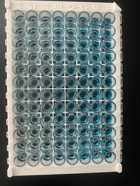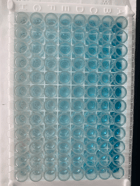
ELISA Tips
We are dedicated to helping our customers achieve exceptional results. While the information below can never be an exclusive solution to every problem you may encounter; it is our hope that you will find the information useful and even beneficial in troubleshooting any problems you may have. Of course, if you find you are still having problems you may submit them to us using this ELISA Troubleshooting Form.
SYMPTOMS
- Elevated background
- Elevated sample/standard
- Weak color
- Poor precision
- No signal
- Low readings across plate
Elevated background
Lack of antigen |
Check protein expression by in situ hybridization. |
Insufficient washing |
Wash well by completely removing liquid and leaving no residue. |
Evaporation of sample from wells |
Be sure to cover plate tightly with parafilm during all incubations. |
Improperly set up blanks |
Follow protocol when designating blank wells. Blank wells contain only TMB and stop solution. Blank results should be subtracted from the reading for all other wells. |
Reaction was not stopped |
Ensure the use of fresh stop solution. |
Metals in buffer (whole plate turned blue) |
Make sure all buffers contain no metals. |
TMB exposed to light prior to experiment |
Ensure the use of using new TMB only in the dark. |
Non-specific binding on secondary antibody |
Try different formulations of coating solutions. Ensure wells are pre-processed to prevent non-specific binding. Use affinity-purified antibody and preferably one that is pre-adsorbed. Use serum (5-10%) from same species as secondary antibody (bovine serum is also recommended) |
Blocking of non-specific binding may be inefficient |
Try higher blocking protein concentration. Increase blocking time. Use fresh buffer. |
Primary antibody concentration too high |
Repeat the assay with lower antibody concentrations to find the optimal one for your experiment |
Excess antibody/substrate |
Dilute the substrate and reduce substrate incubation time. |
Elevated sample/standard
Standards diluted incorrectly |
Follow protocol for correct dilutions and dilute using the appropriate buffer. |
Incorrect HRP dilution |
Follow protocol for correct dilutions and dilute using the appropriate buffer. |
Weak color
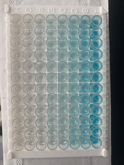
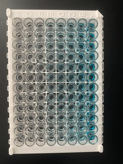
Substrates not brought up to room temperature prior to use |
Substrates need to be at 25°C prior to use. |
SAV HRP made at beginning of protocol |
SAV HRP will lose its potency. Make no sooner than fifteen minutes prior to use. |
Low antibody/substrate concentration |
Low antibody - Repeat the assay with higher antibody concentrations to find the optimal one for your experiment. Low substrate - Add more substrate to the wells. Make substrate no more than one hour before use. |
Poor precision

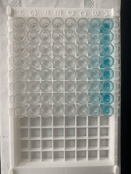
Wells scraped |
Do not scrape bottom of well with pipette tip. |
Wells not washed thoroughly |
Check that all ports of the plate washer are unobstructed. Wash wells as recommended. |
Bubbles in wells |
Ensure no bubbles are present prior to reading the plate. You can try to remove bubbles by gently pipetting up and down. You can prevent the risk of bubbles forming by practicing proper pipetting technique. |
Incorrect amounts of liquid added to wells |
Generally more than 100uL and less than 300uL should be added to each well. |
"Edge effect" |
This happens due to uneven temperature of the plate: from the outer edge wells to the wells in the center of the plate. |
No signal
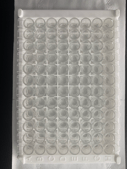
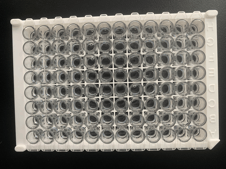
Capture antibody did not bind |
Ensure to use ELISA plates and not tissue culture plates. |
Detection not sensitive enough |
Consider switching to a more sensitive detection system, for example from colorimetric to fluorescence, or from direct to indirect detection. |
Incorrect filter settings used for detection |
Ensure plate reader / instrument is set to read the correct absorbance wavelength or excitation/emission wavelengths for fluorescent detection. |
Compatibility issues |
Make sure you use a secondary antibody that was raised against the primary antibody species. Make sure that the isotypes of the primary and secondary are compatible. |
Low readings across plate
Plate expired |
Nothing is able bind to a microtiter plate, it is best to coat new plates. |
Insufficient development time |
Allow the plate to develop longer based on optimization. |
Insufficient antibody |
Increase antibody concentration. |
Insufficient incubation |
Increase incubation time. |
Insufficient temperature too low |
Incubation temperature may require optimization for the best results. |
Bottom of the plate is dirty |
Clean bottom of the plate to allow the machine to read properly. |
